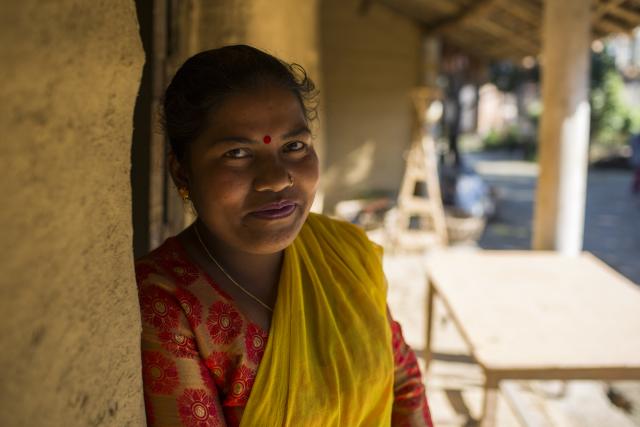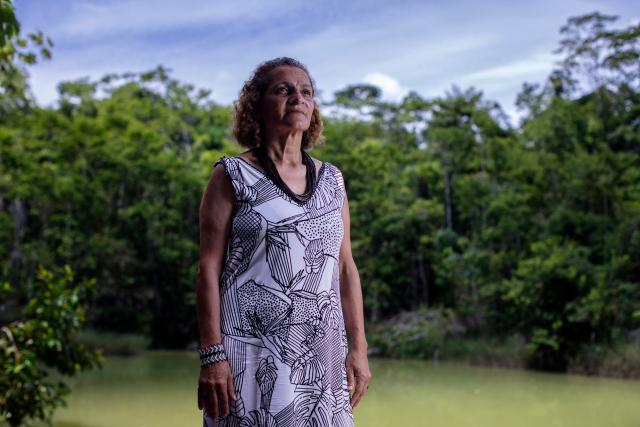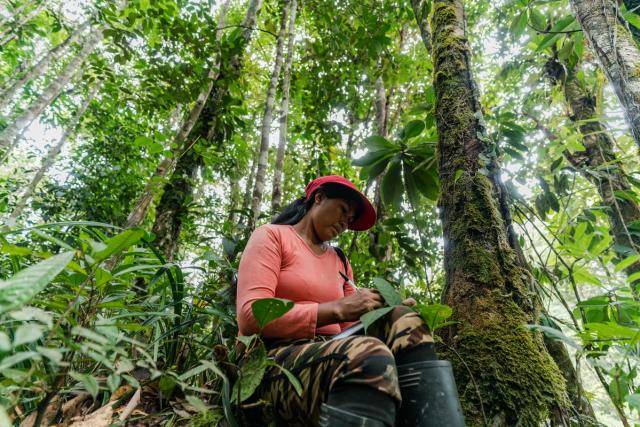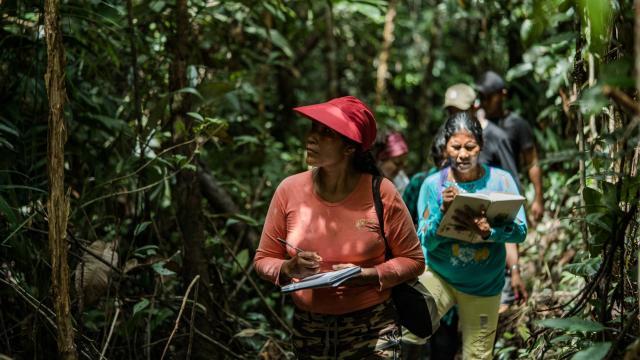Our commitment to working with people and communities around the world
We believe working in collaboration with Indigenous peoples and local communities is the most effective, equitable and efficient way to restore the natural world that we all hold dear and depend on.
Our approach
At WWF, we strongly believe that recognising the rights, territories, laws and culture of Indigenous peoples and local communities is crucial to delivering inclusive and sustainable development and finding the most effective solutions to the most pressing environmental problems.
We are committed to working in accordance with Indigenous and local knowledge and guidance, including partnering with Indigenous peoples and local communities where and when invited to do so. Partnering with Indigenous peoples and local communities embraces their knowledge, sovereignty, governance and leadership, which are crucial to conserving threatened wildlife and restoring precious habitats, as well as advancing economic stability, food security and other specific community needs.
To ensure and evidence that we are transparent and accountable, we have a safeguarding system in place globally. Safeguards are designed to manage risks, uphold human rights and ensure our projects deliver better outcomes for communities and nature. We use safeguards to identify, avoid and mitigate any negative social and environmental impacts and maximize positive outcomes from our work. We apply safeguards in the design, implementation and monitoring of work we fund or directly manage in landscapes and seascapes across the world.

Dalla Village Homestays – Nepal
Dalla village is located in Khata Corridor, a narrow strip of forest that connects Nepal’s Bardia National Park with Katerniaghat Wildlife Sanctuary in India. This forest is also home to tigers, elephants, rhinos and other wildlife. WWF-Nepal have supported a community homestay initiative in Dalla, where residents open up one or two of their rooms to tourists visiting the area.
The project was designed to allow visitors to appreciate the rich biodiversity of the region and the culture of the Tharu Indigenous people, while providing Dalla residents and their local community with a source of income. The new income stream helps bolster support for conservation and buffer the loss of income communities may face when wildlife damages their crops - helping to reduce the cost and increase the benefits of living near wildlife.
“We do all this conservation, putting a lot of time into creating a community forest and helping it grow. But the best part is having people come,” says Chaudhary, who sometimes gets up to 18 guests a month. “I used to think, ‘Why do they come?’ But now if they don’t come, I feel like there is silence in the village. And because my financial situation has really improved, I’m able to give my son a better education.”
At present, communities are adapting their homestays to become more COVID-safe in preparation for when tourism returns. Learning from this experience, WWF and the Tharu Indigenous people continue to work together to explore products and services that will help the communities diversify their income sources and become more financially resilient.

FOREST DRONE MONITORING – BRAZIL
In the Uru-Eu-Wau-Wau Indigenous people’s territory in Rondônia, Brazil, we’re working with Indigenous communities to be better prepared for invasions by land grabbers and forest fires in their territory.
Ivaneide Bandeira Cardozo (Neidinha) was raised in the Uru-Eu-Wau-Wau Indigenous people’s territory and co-founded the Kanindé Ethno-Environmental Defense Association. A partnership between WWF and Neidinha’s association led to the provision of drones and a drone-piloting course in 2019. The drones make it possible to map, film and photograph areas under threat and give accurate information to help police and prosecutors to stop crimes. Monitoring can be done remotely, avoiding conflict with land grabbers, prospectors and loggers.
Neidinha says: “During a drone flight to assess the impacts of the last fires, with WWF and the Uru-Eu-Wau-Wau people, we were surprised to see a huge new area of deforestation we were unaware of. We were startled to see the forest cut down. This is scary. It makes me want to cry and makes me very sad.”

GRASSLANDS FOR LIVESTOCK AND WILDLIFE – TANZANIA
In the rangelands of Tanzania, many Maasai people depend on raising livestock for their livelihoods. Due to increasing livestock numbers, land conversion for grazing, and the impacts of climate change, these communities are facing a shortage of grass for their livestock to eat.
Yohana Lesirkon and his fellow community members realised they needed to manage their pastures in a different way. He joined African People and Wildlife’s Sustainable Rangelands Initiative, supported by WWF. The initiative keeps these critical areas open and flourishing for the long-term benefit of rural communities and wild animals. Teams of community rangeland monitors collect data on their grazing areas electronically. This allows them to access, visualise and share information about pasture quality with their community networks in real time.
“Because of this project, our communities are able to work together in a collaborative, scientific way,” says Yohana. “We’re already starting to see an improvement. Pastures that used to be bare now have grass growing. We also have transport assistance that allows us to monitor and manage areas that were difficult to reach before.”

Amazon Rainforest Surveys - Colombia
WWF and the Puerto Rastrojo Foundation are collaborating with the Indigenous community of La Chorrera in the heart of the Colombian Amazon, bringing together traditional knowledge and conservation science to survey their forest territory. This means they can analyse the ecosystem services the forest provides from an indigenous viewpoint, along with the impacts of losing them – to help strengthen indigenous decision-making and governance.
Chela Umire lives in La Chorrera with her family, and is passionate about protecting the forest for future generations. Chela is a member of the Ecosystem Services Assessment team, a group of local Indigenous people who are mapping their traditional territory and cataloguing the wealth of resources the forest provides for their community.
Chela shares her wishes for her home: “My dream for the Amazon is that we all benefit from a healthy environment, we have good air to breathe, that the river follows its natural course, that the forests are kept, and we preserve it in the same way that our grandparents did, using the knowledge they gave us. That the Amazon could be a place where there is peace and tranquillity, for everyone who lives here and for those who come to visit.”
Many of the world’s biodiversity-rich areas are also home to Indigenous peoples and rural communities whose livelihoods and cultures depend closely on their natural environment. Indigenous peoples and local communities have governed and conserved their lands and waters for generations; and are some of the best stewards of the world’s remaining natural landscapes.
Growing pressures from mining, infrastructure development, oil and gas exploration, agro-industry and industrial logging – often driven by our own lifestyles – threaten the health of ecosystems the world over. And when nature suffers, so too do the people closest to it – Indigenous peoples’ ancestral and sacred lands are degraded, overfishing leaves coastal communities struggling to support their families, and climate change, water shortages and soil erosion can cause smallholders’ crops to fail – and with it, their primary source of food and livelihoods. So, as well as aiming to restore biodiversity and ecosystems, conservation objectives must also achieve equitable and sustainable development for the wellbeing of the people that rely on nature.
At WWF, we believe Indigenous peoples and local communities must be acknowledged as critical rights-holders and decision-makers in conservation and natural resource use, and recognised for their historical and current contributions to maintaining these landscapes for the benefit of all.
